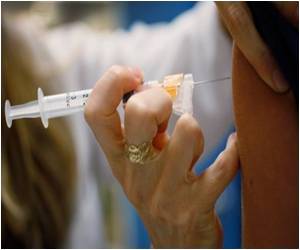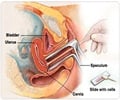A recent study reveals that oral human papillomavirus infections are more common among men than women.

The findings shed more light on a growing epidemic of HPV-linked head and neck cancers which are expected to eclipse cervical cancer cases by 2020, and could warrant clinical trials of an HPV vaccine against oral lesions, the study authors said.
Currently the HPV vaccine is recommended for girls and boys as early as age nine and 10 to prevent cervical and anal cancers.
The study included 5,579 people who took part in the National Health and Nutrition Examination Survey (NHANES) 2009-2010, and agreed to a 30-second oral rinse test at a mobile examination center.
Oral HPV was found to be more prevalent among people who had more lifetime or recent sex partners, and was also more frequent in current smokers, heavy alcohol drinkers and among former and current marijuana users.
Peak rates of oral HPV among men were seen at age 60-64, with 11.4 percent of cases in that age range. The next highest oral HPV prevalence was seen in men age 30-34.
Advertisement
"Taken together, these data indicate that transmission by casual, nonsexual contact is likely to be unusual," she wrote, urging more study in this area to establish what researchers call the "natural history" of a disease.
Advertisement
"Natural history studies of oral HPV infection are therefore necessary to understand the effects of age, sex, and modifiable risk factors (e.g., smoking and sexual behavior) on the incidence and duration of oral HPV infection."
Oral cancers have "significantly increased over the last three decades in several countries and HPV has been directly implicated as the underlying cause," according to background information in the article.
Gillison, who has been studying HPV and cancer for 15 years, told a US science conference last year that when comparing people who have oral HPV to those who do not, "the single greatest factor is the number of partners on whom the person has performed oral sex."
People with oral HPV infections are 50 times more likely to get oral cancer than people who do not have HPV.
Researchers have found a 225-percent increase in oral cancer cases in the United States from 1974 to 2007, mainly among white men.
HPV is linked to almost 13,000 cases of cervical cancer yearly in US women, 4,300 of which are fatal. Researchers expect the number of oral cancer cases will surpass the number of cervical cancer cases in the next eight years.
The study was funded in part by the pharmaceutical giant Merck, which makes a vaccine against HPV.
Merck's Gardasil was approved for girls and women from age nine to 26 in June 2006 and for males in the same age range in October 2009.
Source-AFP














